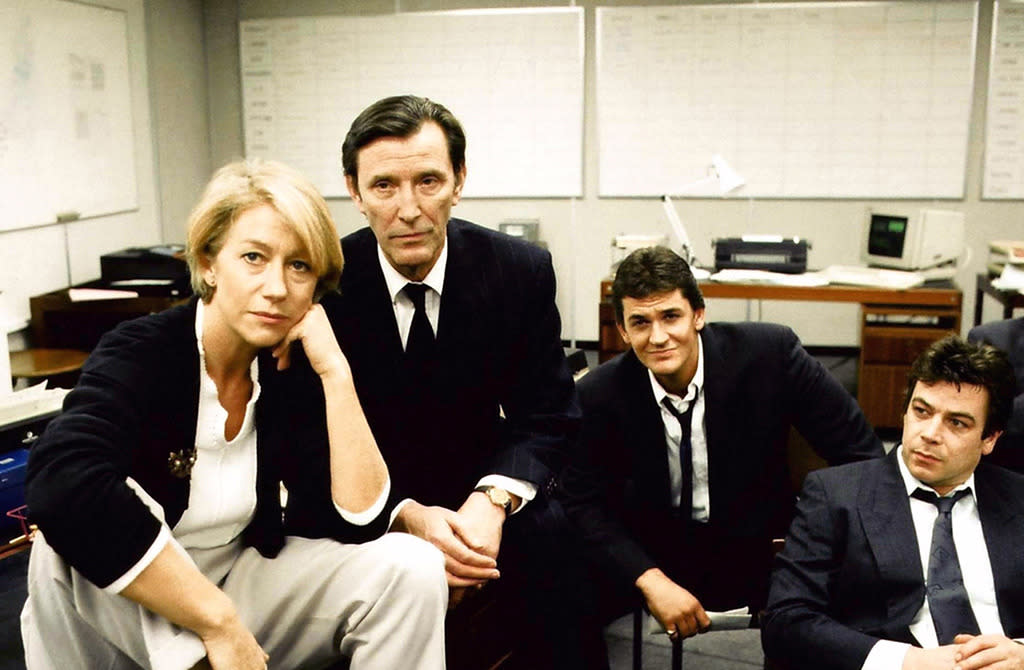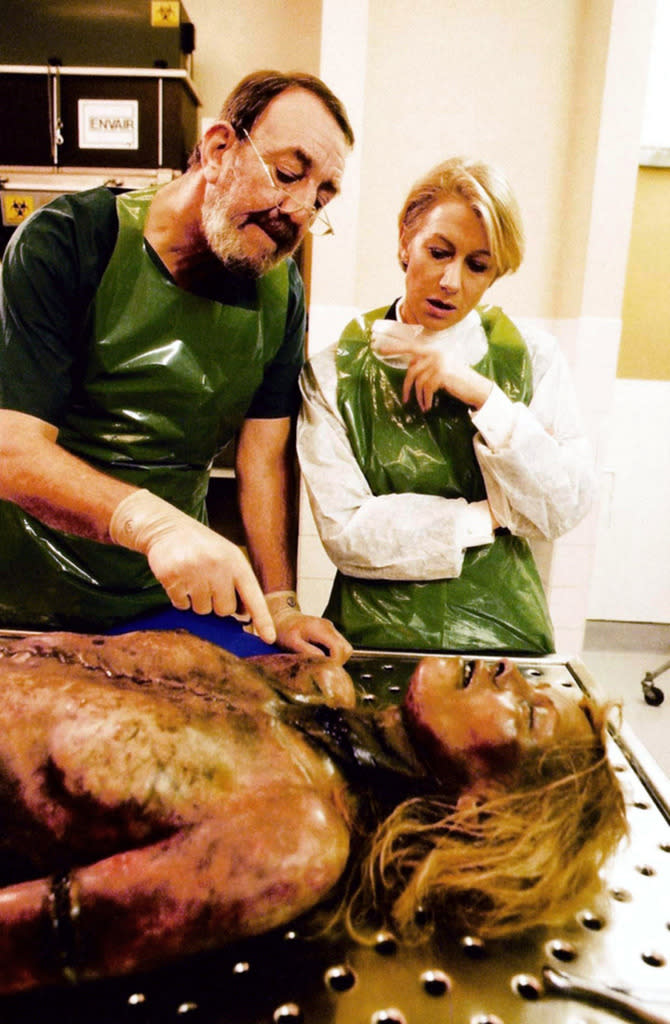Happy 25th Anniversary, 'Prime Suspect'!

The ‘90s was a great beat for TV cops. While Detectives Briscoe and Logan maintained Law & Order, Kelly and Sipowicz — followed by Sipowicz and Simone — put the blue in NYPD Blue, and Homicide’s Frank Pembleton gave us an up-close look at life on the street. But that era’s finest fictional police officer didn’t patrol American shores. Twenty-five years ago this month, London’s own DCI Jane Tennison (Helen Mirren) caught her first Prime Suspect, when the two-part procedural premiered on ITV in England. Shown over two nights — Apr. 7 and 8, 1991 — Prime Suspect earned instant acclaim and high ratings for its central mystery and social relevance. Addressing both racial tensions within London’s diverse population, and rampant sexism within the metropolis’s police force, the series spotlighted the grim, difficult nature of police work, made all the more difficult for Tennison because of her male-dominated precinct’s Cro-Magnon gender politics.
Related: Our 25 Favorite Before-They-Were-Stars ‘Law & Order’ Guest Stars
Prime Suspect found its way to American shores the following year when it debuted on PBS, followed closely by the sequel series, Prime Suspect 2. Already an established and respected actress, the role of DCI Tennison propelled Mirren to an even higher level of stardom. Prime Suspect’s creator, author and screenwriter Lynda La Plante, enjoyed a major career boost as well, winning an Emmy for her script. In total, seven Prime Suspect were produced between 1991 and 2006, all of which can currently be streamed on Acorn TV, which specializes in bringing vintage and recent British programming to American eyeballs. (Maria Bello headlined a solid, but short-lived U.S. remake in 2011, twenty years after the British series began.) While the entire run is worth your binge-time, there’s still something special about Tennison’s first big case that makes it an invigorating re-watch 25 years on. Here are the five ways in which the original Prime Suspect is arguably the most important and influential procedural of the ‘90s.
1) Jane Tennison Was Vic Mackey Before Vic Mackey
Although DCI Tennison tended to abide by the rules rather than break them — which The Shield’s Strike Team leader did with wild abandon — Jane has the same treasure trove of personal demons, and relentless desire to prove herself in the face of her colleagues’ skepticism and outright distrust. And as the series continues, those demons — particularly Jane’s longstanding issues with alcohol — come close to consuming her. From its first scenes, Prime Suspect is careful to highlight the flaws that run underneath Tennison’s determined exterior, flaws that are artfully exposed in Mirren’s emotionally raw performance and La Planet’s subtle writing. In many ways, she’s the forerunner of the Age of the Antihero that semi-officially launched with the premiere of The Sopranos in 1999.

2) Law & Order: SVU Wishes It Were This Grim
The last Law & Order series standing takes it upon itself to provide viewers a weekly dose of gruesome sex-related crimes. Sometimes, though, the gruesomeness is so extreme, it’s almost comical. But the case that Tennison is tasked with solving in Prime Suspect is no laughing matter: the brutal killing of a young female prostitute, potentially committed by an attempted rapist, George Marlow (John Bowe), who was just been released from prison. Even today, the series’ frank depiction of this crime is bracing stuff, and later installments would assign Tennison even grimmer cases involving, among other things, child prostitution and war crimes.
3) It Put Gender Discrimination in the Spotlight
Part of what made Prime Suspect so revolutionary in 1991 was the way La Plante directly confronted the sexism that pervaded workplaces on both sides of the Atlantic, and yet was rarely discussed openly. On American television, shows like Cagney & Lacey made overtures towards exploring the gender imbalance in office politics, but Prime Suspect cut directly to the heart of the matter, depicting the hostility and even rage that Tennison’s very presence inspired in too many of her male colleagues, led by Tom Bell’s obstructionist detective superintendent Bill Otley. This element of the series grew more muted over time, as many of those same officers came to admire Tennison, and the focus shifted primarily to casework. But Prime Suspect was one of the first shows to initiate an important conversation about equality in the workplace — a conversation that, sadly, still continues today.
4) It Introduced Lord Voldemort
Helen Mirren had already enjoyed an extensive career on stage and screen by the time Prime Suspect came along. But the series was the first time many viewers set eyes on a charismatic young actor named Ralph Fiennes, a stage-trained performer going before the TV camera for the very first time as Michael, the bad boy boyfriend of the murdered girl. It’s very possible that Steven Spielberg was a Prime Suspect fan, because two years after the show’s debut, Fiennes landed what proved to be his breakout film role in Schindler’s List, embarking on a career that eventually brought him face-to-face with Harry Potter.
5) It Launched a Golden Age of British Procedurals
Broadchurch. Cracker. The Fall. Luther. The roots of all these fan favorite U.K. procedurals lie with Prime Suspect, which made both English and American viewers eager for more gritty crime stories set in and around the United Kingdom. And British television has happily obliged, churning out a slew of addictive shows about unhappy cops and the depressing murders they solve. Thanks for that…we think?
Prime Suspect is currently streaming on Acorn TV

